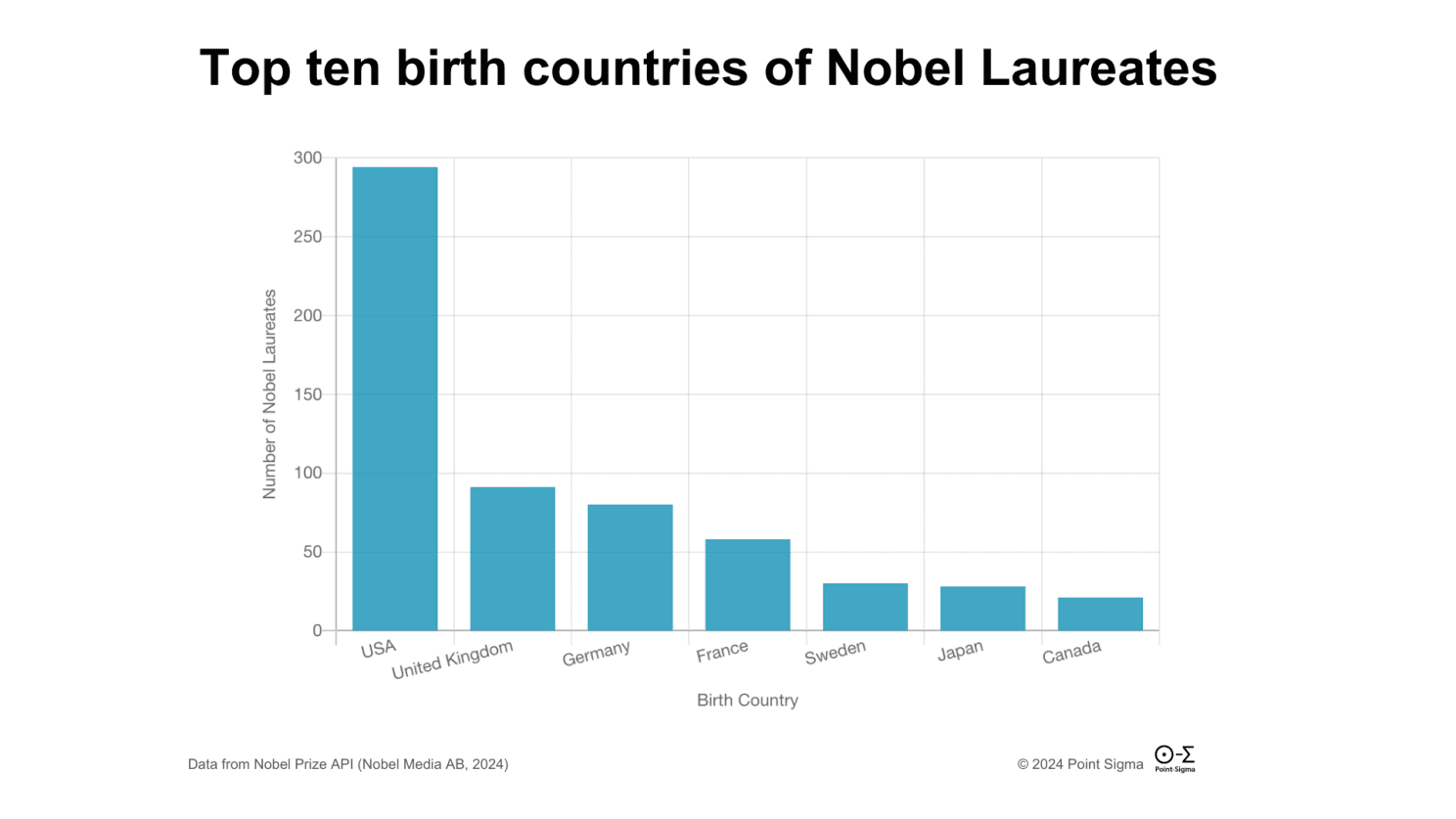Oct 14, 2024
Insights

by
Stephanie Ohumu
On Tuesday, The Royal Swedish Academy of Sciences announced an unprecedented decision: the Nobel Prize for Physics had been awarded to two Artificial Intelligence scientists - Geoffrey Hinton and John Hopfield. As debates about potential miscategorization erupted, the following day brought even more surprising news. Demis Hassabis and John Jumper of Google DeepMind, alongside David Baker, had been awarded the prize in Chemistry.
Over the weekend, conversations raged about how winners are selected, what it means to pioneer work, and the interconnectedness of categories. As an AI company utilizing Artificial Curiosity — a concept pioneered by Jürgen Schmidhuber, the founding father of modern AI, amongst others — we decided to explore what the Nobel Prize data can tell us about this prestigious award to help inform part of that conversation.
Not the first topical Nobel
This is not the first time the Nobel’s have reflected world events. In 1951, for example, both the Physics and Chemistry prizes were awarded for work related to atomic nuclei and transuranium elements, mirroring the ongoing nuclear arms race. That year, the United States conducted 16 nuclear tests at the Nevada Test Site, while the Soviet Union carried out its second test in Kazakhstan.

The Nobel Prizes have long been a reflection of the times, and 2024's AI-focused awards continue this tradition.
Age
As a general trend, laureates are getting older, a pattern that began in the 1950s and has persisted. Physics laureates tend to be younger, while Literature laureates are typically older.

Gender disparity
This year's prize in Literature was awarded to Han Kang, making her only the 65th woman to receive a Nobel Prize. The number of prizes awarded to women per decade has increased from 3 in the 1960s to 12 in the 2020s. 57% of prizes awarded to women are in the Peace and Literature categories. It's worth noting that only one person, a woman, has won the Nobel Prize in two different categories: Marie Curie, who received a joint prize in Physics in 1903 and a sole prize in Chemistry in 1911.


US dominance
The majority of laureates were born in the United States, with New York boasting the most laureates (55). This trend began in the 1930s and has continued, with around 71% of all Nobel Prizes awarded to American nationals. Two of the three joint winners of this year's Chemistry prize - John M Jumper and David Baker - are Americans.

Collaboration
The nature of scientific discovery, often deeply collaborative, has sparked ongoing controversy about the Nobel Prize's three-person limit for joint winners. However, data shows an upward trend in the number of joint awards given over time. It's worth noting that the introduction of the economics prize in 1968 has influenced this trend.

Blurring traditional boundaries
The 2024 AI-focused awards are part of a broader trend of blurring traditional category boundaries. This evolution reflects the increasingly interdisciplinary nature of modern research and cultural contributions. A notable example was the 2016 Nobel Prize in Literature awarded to Bob Dylan, primarily known as a singer-songwriter, "for having created new poetic expressions within the great American song tradition." This decision sparked debates about the definition of literature and the evolving nature of the prize.
Recent years have seen an increase in awards that bridge multiple disciplines, like Daniel Kahneman's 2002 Economics prize for integrating psychological research into economic science, and this year's Physics and Chemistry prizes.
As research becomes increasingly interdisciplinary, we might expect to see more unconventional choices, and an increase in joint awards across categories. And maybe even potential discussions about creating new categories or redefining existing ones.
Data processing and visualization were largely automated using Point Sigma. Human input focused on uploading data, selecting and refining auto-generated graphs, and interpreting results and writing analysis. Refinements included adding headings, and visual aids like map arrows. Learn more about Point Sigma.
Please note: The data for the 2020s is incomplete as of this analysis. Additionally, this dataset was compiled prior to the Nobel Prize announcements for Economics, so it does not include the most recent laureates. These factors should be considered when interpreting the trends, especially for the most recent decade.